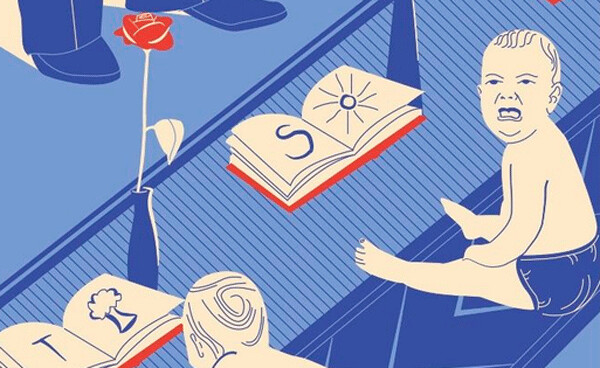Brave New World, Part Two

The United States Has Too Much “Sisu” And Not Enough “Talkoo”
Last week I wrote about how many predictions made by Aldous Huxley in his 1932 book “Brave New World” were beginning to come true in 2018. When I read the toll to travel on Interstate 66 in northern Virginia last Tuesday morning reached $47.25 during rush hour, I thought another premise of Huxley was coming true. When Corky and I lived in Washington during 1954-55 while I went through Officer Candidate School at Quantico, Virginia, I commuted 70 miles each day. Eisenhower’s National Interstate System banned all tolls in the beginning. $47.25 a day to travel to your job in Washington? You’ve got to be kidding! What does your salary have to be to easily absorb that daily cost? This is another sign of income inequality in the U.S.
Billionaires, millionaires dictators, presidents of countries, governors, CEOs, the Trumpocracy cabinet, and The Best Congress Money Can Buy have rushed to the World Economic Forum in Davos, Switzerland loudly proclaiming they were going to do something about income inequality. All that horsepower has not come up with answers yet. Perhaps they shouldn’t have spent so much time searching for tax havens so their money couldn’t be used to eliminate inequality back home.
Actually solving the income inequality problem is quite easy, according to some economists and social scientists:
(1) Take power away from the
plutocrats,
(2) Tax their wealth fairly,
(3) Pass progressive taxation,
(4) Install a minimum income for
all citizens,
(5) Strengthen all unions,
(6) Forgive all student debt and
provide all higher education,
(7) Implement universal health
care, and
(8) Strengthen all elements of
welfare.
The problem is--this ain’t easy. It’s very difficult to remove plutocrats from power because of the old maxim of the golden rule—those who have the gold rules.
Mass Killings Would Help—But Not Much
Other experts in the economic field such as Stanford professor Walter Scheidel say that their research shows the only time there has been equalization of wealth is when major societies have suffered huge mass deaths. The Black Death in the Middle Ages knocked off about a third of the European population. Labor became very scarce so the plutocrats had to compete for labor. Joseph Stalin filled the Russian gulags with prisoners and killed about 50 million of his countrymen in gaining control of Czar Nicholas’s Russia. He didn’t kill enough to make much of a difference. Neither did Mao in China or Pol Pot in Cambodia or other ogres of the last 200 years although they made an effort to kill millions. Over 50 million died in the pandemic flu of 1918. Not enough deaths to impress the plutocrats in charge. Will mass deaths caused by climate change make a difference? Heat and water might kill more than the bubonic plague, particularly in the Tropical Zone and tidal countries like Bangladesh and Indonesia.
Every once in a while we have an “industrial revolution” that changes society and the labor of individuals. The invention of looms and the resulting mass production of cloth added the term “Luddites” to our lexicon. The peasants rushed to the cities to work in the mills, thus upsetting the economy. Think for a minute of how the horse changed our lives in the 19th and the first quarter of the 20th century. My dad came to the Dakotas around the turn of the 19th century and worked for a large bonanza farm that wintered 900 horses. These farms before tractors used 40-horse teams to pull combine harvesters. In World War I the German army used 1.8 million horses. Over 1.25 million were killed in combat. In World War II, the war of the so-called mechanized blitzkrieg, the German army still used 2.7 million horses and 1.8 million died in combat. In the early 1900’s there were enough horses working the streets of New York City to drop 2.5 million pounds of horse apples on the street each day. The citizens had to wait for Henry Ford’s cars and trucks to pollute the atmosphere above the horse manure. Between 1900 and 1920 the U.S. used 19 million horses to replace human labor. By 1940 we were down to nine million. By 1954 we were down to three million. In 100 years the horse replaced humans in farm labor, then the tractors replaced the horses, and now farmers are disappearing because of huge machines.
How About Horseburgers, Horse Sausage, And Horse Chops?
We presently have a huge excess of horses in the U.S. Our Bureau of Land Management says we can keep only 27,000 wild horses and burros on 27 million acres of western grazing land. Presently we have 72,000 horses on that land eating everything in sight. The BLM is currently feeding 45,000 horses in corrals which will cost us $1 billion. Over 200 wild horses in Nevada are starving to death according to the BLM. For some reason Americans do not want to eat horsemeat. As an old farm boy I liked some of our cows, pigs, geese, and chickens but I loved to eat them. I think we should “harvest” the 90,000 on the land and in corrals and give the meat to the food stamp program. My French relatives love horse meat because it is less fat and more nutritious than beef. It’s very popular in Europe. Cultures do change.
Dorothy Parker: “To See What God Thinks Of Money, Just Look At All The People He Gave It To”
If we follow the admonition of Dorothy Parker, God gave Bill Gates, the second richest man in America, lots of money to do things. Years ago Bill spent billions trying to reform secondary education about which he knew nothing. He moved on to curing the world of malaria. He has been making progress towards that goal. His latest project is making a waterless toilet. I hope he succeeds. But Bill continues to prove that even if you’re rich you don’t know everything. He has gained enough sense over the years to hire people who actually know something about a subject he is working on. Sometimes even government knows best.
We presently have 103 million poor people in the United States, including six million with no income at all other than food stamps. When a cold wave hit the East this winter, 60 Baltimore public schools discovered they had no heat or had heating issues. In many classrooms the temperature never got above 40 degrees so students had to wear jackets, hats, and gloves to survive. The average U.S. school building is 45 years old. At the Pine Ridge Indian Reservation in South Dakota many families have to choose between heat and food this year. Pine Ridge, an area larger than Delaware and Rhode Island combined, has a per capita income of $9,150 and 80% of the residents are unemployed. The suicide rate often doubles during the winter.
Elon Musk recently sent his own red Tesla convertible on a rocket trip to the sun or Mars on the front end of a 27-engine rocket with five million pounds of thrust. One reporter suggested he might be looking for another tax haven on Mars. With the country in such a mess do we need another arrogant billionaire spending $90 million to shoot a $300,000 convertible with dummy driver into space? There are so many homeless on the streets of San Francisco that local businesses say they are driving tourists away.
When Will We Learn To Share Wealth?
David Autor, one of the world’s premier labor economists at MIT, thinks we are not dealing with technology and income inequality very well. He uses the discovery of crude oil by Saudi Arabia and Norway as an example of how to deal--and how not to deal--with sudden wealth. Saudi Arabia decided to segregate wealth and Norway decided to share it. Saudi Arabia is rich, unequal, and unhappy while Norway is rich, egalitarian, and happy. Autor says the great challenge is whether jobs will pay decent wages—and whether people will have sufficient skills to perform them. He adds: “It’s never been a better time to be a highly educated worker in the Western world. But there hasn’t been a worse time to be a high school dropout or high school graduate.”
Perhaps we should take lessons of government from Finland and the Scandinavian countries. After just a century of independence from Russia, Finland has been recognized as the most stable, the safest, and the best-governed country in the world. It is also the third wealthiest, the third least corrupt, the second most socially progressive, and the third most socially just. Finland’s judicial system is the most independent, the police the most trusted, its banks the soundest, and its citizens enjoy the highest levels of personal freedom, choice, and well-being. It also has the fifth lowest income inequality. Finns say that education is the key to their advancement. All K-!6 education is free and the system is often called the world’s best.
The Finns use two words in their language to describe why they are so successful at governance and sharing the wealth. The first word is “sisu,” which means “a kind of dogged, courageous persistence regardless of consequence.” They say that’s how they fought off Russian forces in 1939-40 when they were outnumbered 3-1. The second word is “talkoo,” which means “working together, collectively, for a specific good.” A woman described the word this way: “It means getting the harvest in, stocking wood, raising money. It’s about cooperating, everyone together, equally.” Perhaps these two words represent why Americans consume 80% of the world’s opiates when we are only 4.43% of the world’s population. I think the odds of ever achieving a level of governance close to the Finland and the Scandinavian countries is a long shot.
We now have 100 wealthy families that own nearly as much land as in Maine and New Hampshire, a total of 27 million acres. The top 10% own 92% of the nation’s non-home real estate. The bottom 90% own just 18% of non-home property.
Another statistic indicates that firearm deaths will probably accelerate because the SHOT (Shooting, Hunting, Outdoor Trade) show, the gun industry’s largest sales event in the world in Las Vegas, featured 2,000 companies and 13 miles of sales booths for firearms and accessories. The NRA and the gun lobby must be quite happy about the mass killing of students and teachers at Parkland, Florida. Sales of firearms, particularly semi-automatic AR-15 and similar models, always go way up after mass killings. We have had 30 mass killings and eight school shootings already in 2018. What will it take, Congress, a mass killing every day? How about 200 first graders? Would that do it? If a civilian needs more than three rounds in a clip or magazine in a semi-automatic to kill a deer, he needs to eat pork or lamb or take lessons on how to hunt and shoot. Americans are tired of thoughts and prayers.
